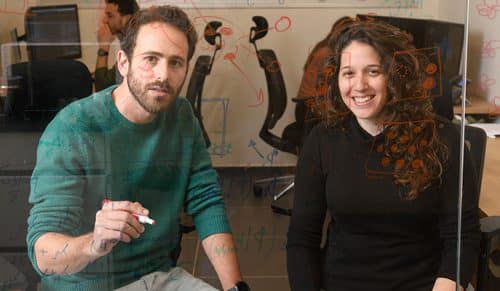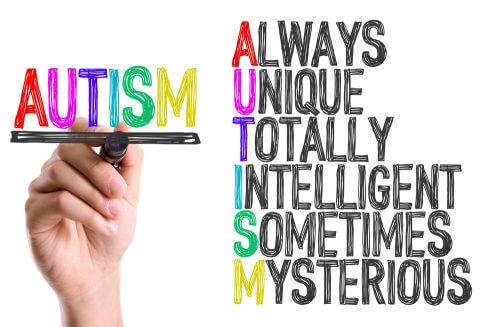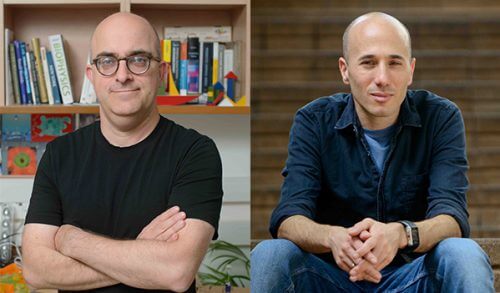How is social information represented in the brain - and what are the changes that occur in this representation in autism?

When a baby comes into the world, he does not distinguish between himself and his surroundings, and is therefore focused on himself and his needs; "His Highness the baby", Sigmund Freud called this mindset. Gradually the baby will learn that he is a separate being - a necessary step on the way to social communication that acknowledges others about his needs, intentions and feelings. The central neural address for the development of these social skills is the prefrontal cortex - the area that develops last in our brain and fully matures only in adulthood. In the autistic spectrum disorders, characterized by difficulties in social communication, anatomical changes in the prefrontal cortex have been demonstrated, but very little is known about how social information is actually encoded in this brain region. In a new study by Weizmann Institute of Science scientists, recently published in the scientific journal Nature Neuroscience, striking differences between the coding of social information and non-social information were demonstrated in the prefrontal cortex of mice. The researchers also discovered that in the model of autism in mice, no clear difference was recorded in the encoding of the two types of information, and the activity pattern of the nerve cells was much noisier compared to normal mice. These findings may pave the way for new treatment directions for autism spectrum disorders.
Mice, like humans, are very social creatures, living in groups with a defined social structure. Social communication between mice is a complex and multivariable behavior, therefore difficult to measure. To test how the brain processes social information, researchers from the laboratories of Prof. Ofer Yizhar and Prof. Elad Schneidman in the Department of Neurobiology designed an experimental set-up that makes it possible to significantly simplify complex social situations. "The sense of smell plays a central role in social communication between mice," explains Dr. Dana Ruby Levy, who led the research together with research student Tal Tamir. "Therefore, we built an experimental system that allows different odors to be injected into mice while we measure their response to these odors using electrodes in the prefrontal cortex." Some of the odors in the experiment had a social meaning - natural odors secreted by male or female mice. In addition, the researchers spread scents of peanut butter - a known appetite stimulant in mice, banana scents - which mice are quite indifferent to, as well as a scent reminiscent of cut grass - which mice find somewhat repulsive.

The researchers found that the response to the social odors in the prefrontal cortex of the mice was much stronger compared to the non-social odors. In fact, about a quarter of the neurons in this area responded exclusively to social odors - twice as many neurons that responded exclusively to non-social odors. "In previous experiments conducted in other brain regions, no preferential response to social odors was observed - that is, it seems that this is a unique response to the prefrontal cortex," says Prof. Yizhar.
But not only mice - and humans - are social creatures, so are the nerve cells: the neurons in our brain communicate with each other in a language where the "words" are encoded in patterns of common electrical activity. To check how the nerve cells reacted as a group and not just as individuals, the researchers used unique computational tools developed in Prof. Schneidman's research group that allow to check how large populations of nerve cells encode information. The researchers, led by research student Tal Tamir, used these tools to examine the joint activity of the nerve cells and identified patterns that reveal a clear preference for social stimuli over non-social stimuli. "In fact, we saw that the category of the smell - social/non-social - is much more significant than the specific nature of the smell - whether it is an inviting peanut butter or a dreary banana," says Tamir. Moreover, the researchers saw that when the mice encountered the odors a second time, the distinction between the categories only got sharper, in light of past experience, while the separation within each category got smaller. That is, the mice quickly learned to classify the social odors separately from the non-social odors - and did so better after just one experience.

To understand whether social information processing is done differently in the autistic brain, the researchers repeated the experiment in mice that were genetically engineered to reproduce a mutation that was linked to the autistic spectrum syndromes in humans. They found that the transgenic mice responded less to social stimuli and discriminated less between social stimuli and non-social stimuli; This response did not improve even when the mice encountered odors a second time and the prefrontal cortex response to both categories remained similar. In fact, the researchers saw that the brain activity in these mice was basically much "noisier" than in the normal mice - that is, even when no stimuli were presented to them at all, a high variability of spontaneous neural activity was recorded in the neurons of the autistic model. In other words, the "social communication" between the nerve cells was defective.
"Noise seems to play a key role in the failure to represent social information in a mouse model of autism. This failure probably indicates a defective ability to respond to stimuli during social interactions," adds Dr. Levy. In future studies, the researchers will be able to test which manipulations may reduce the noise in the system. If the noise reduction will also lead to a change in behavior - the findings will indicate new directions for the treatment of autism spectrum disorders.
1,000 to 10,000 - the number of "social" connections of an average neuron in the cerebral cortex. In autism, the number of synaptic connections and their strength change so that the neurons are less "synchronized".


One response
It's fun to read informative articles like this one.
Keep up the good work!